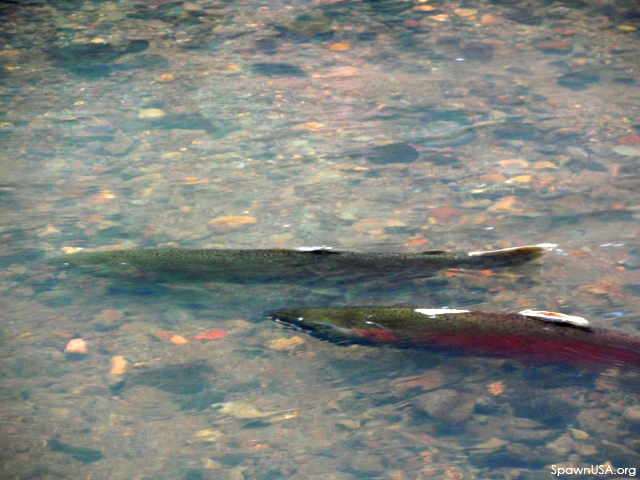A new kind of “creek friendly” project designed to protect local salmon populations will be unveiled this week at the Lagunitas School in Marin County, CA, with a ribbon-cutting attended by students and staff of the school, volunteers and the Marin-based non-profit, the Salmon Protection and Watershed Network.
The opening ceremony will take place on November 21st at 9:30AM at the Lagunitas School’s Upper Campus.
The model project, a rainwater-harvesting system, captures rainfall from the roof of a playground lunch-shelter during the stormy winter months and diverts it into a 30,000-gallon cistern that will serve to irrigate the School’s Organic Garden Project during the dry, summer period. Left un-captured, the runoff would have drained into a 10-inch storm-drain that empties out onto an already eroded bank on Larsen Creek, a salmon-bearing creek in the San Geronimo Valley.
“This project saves precious drinking water, saves the school money on their water bill, and reduces erosion,” said Todd Steiner, SPAWN’s Director. “If this innovative and scaleable project was replicated throughout the watershed, it could help to re-charge our underground aquifer, reducing the impacts of development that cause our creeks to go dry salmon, stranding baby salmon, in the summertime.”
Capturing and re-using this water on site saves society and the environment enormous costs associated with building more dams to meet growing water needs for humans, eliminating the energy needed to pump water from its source to treatment plants to users, and eliminates the need to treat water with chlorine or chloramines for drinking, even though the majority of our water use is for landscaping.
In Marin County 33% of water demand during the summer drought period is used for landscaping. The project will save the Lagunitas School District from purchasing at minimum 35,000 gallons of chloramine-treated water each year from MMWD.
Currently, impervious surfaces from roofs, parking lots, driveways and roads prevent water percolation into underground aquifers, causing more dangerous and frequent flooding that threatens lives and property. The increased velocity and volumes of water also increase soil erosion, damage creek banks and caused harmful sedimentation that harm salmon and other aquatic life.
“Sediment is a key pollutant in salmon streams and bank erosion due to runoff from paved areas deposits fine sediment which smothers gravelbeds, key spawning and rearing areas for endangered salmon and steelhead. Additionally, steep and eroded creek banks become unstable and streamside forests lose their footings, further exacerbating the erosion problem, said Paola Bouley, SPAWN’s watershed biologist.
A single half-acre school parking lot, similar to one of several at Lagunitas School, drains a half-million gallons of runoff in an average rainfall year. If instead of simply disposing of the water as a waste-product, we learn to retain and treat it in vegetated swales and infiltration basins, then we begin the process of protecting what is increasingly a limited resource on this planet, clean water,” remarked Bouley.




